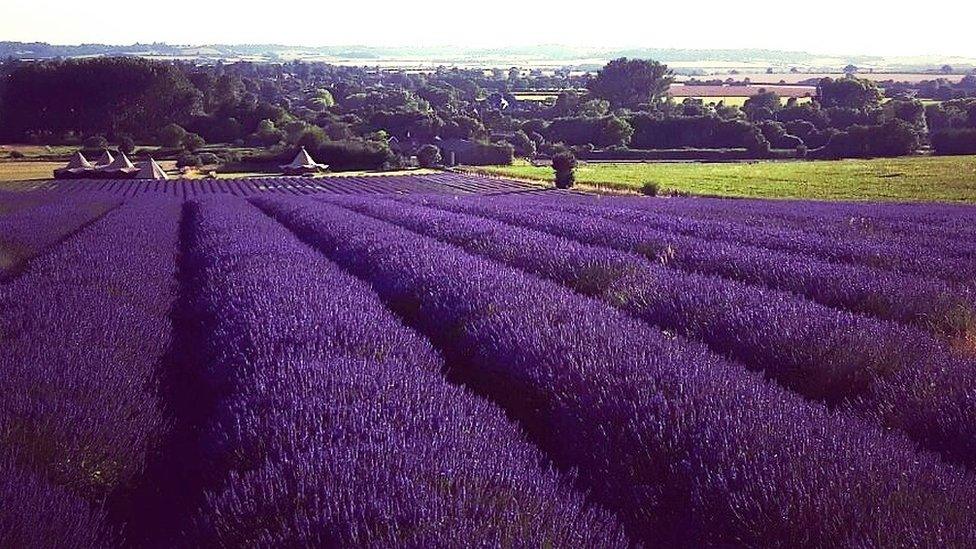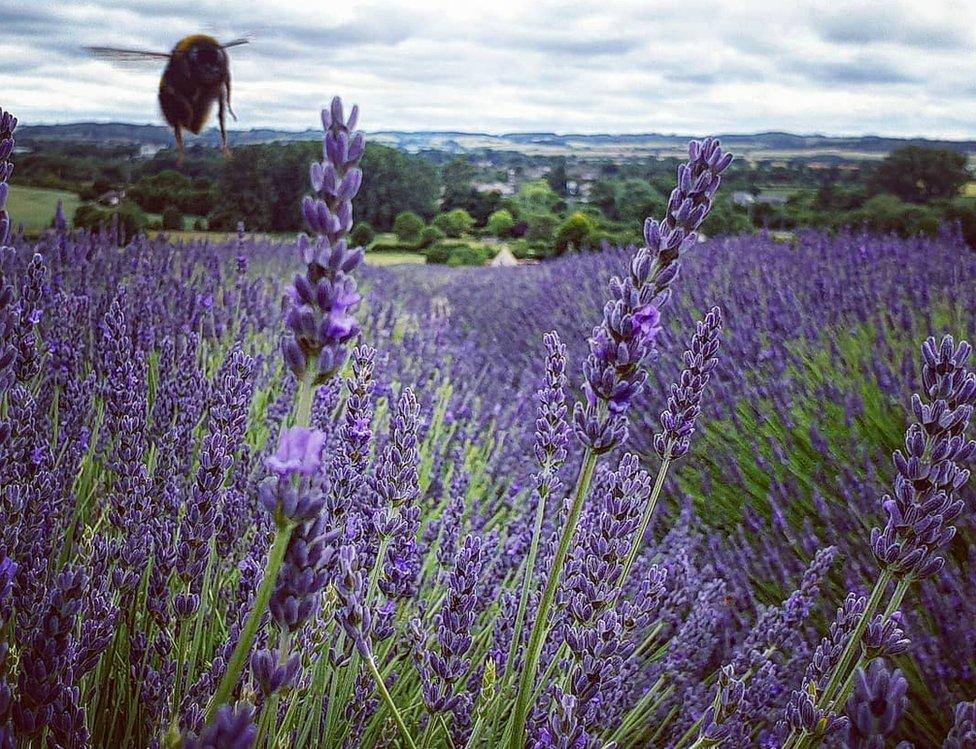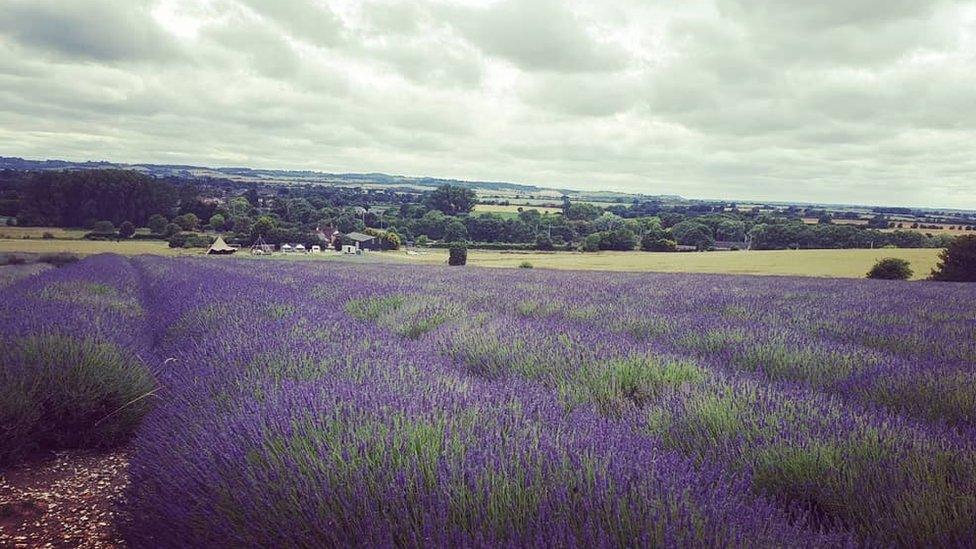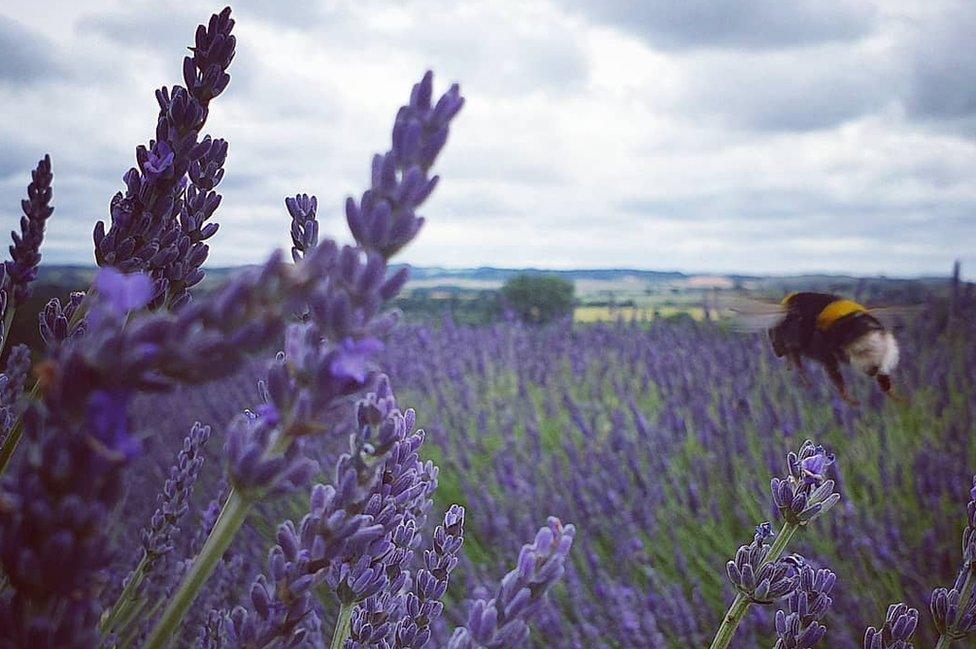Coronavirus: Hitchin lavender farm puts 20th anniversary plans on hold
- Published

Hitchin Lavender has nearly 30 acres (12 hectares) of lavender, which amounts to about 35 miles (56km) of rows for visitors to wander through
A lavender farm has put plans for a 20th anniversary celebration on hold due to the coronavirus pandemic.
Cadwell Farm, near Hitchin, Herts, began growing the crop in 2000 and has planted 20 new rows to celebrate the landmark but said a celebratory event "doesn't feel appropriate".
It has reopened to visitors but numbers are currently down by about 90%.
"We'll be back next year and do something for the 21st," farmer Tim Hunter said.
Five generations of his family have farmed for more than 120 years.
Twenty years ago, they decided to revive the area's once-thriving lavender industry, growing it alongside more traditional arable crops.

Lavender oil is used to treat a wide range of conditions from migraines and skin complaints to stress, depression, tension and exhaustion
Hitchin Lavender now has about 35 miles (56km) of the aromatic lavender rows but relies predominantly on visitors for its income.
Every summer, they pay to pick the flowers, and the "several hundred litres" of oil from what remains is used in products such as pillows and sprays, sold online and on site.

This year visitors can walk through the fields but the museum, barn and play area remain closed and the shop and refreshment area have moved to the main field
The family initially decided not to open this season due to Covid-19 restrictions, but relented after receiving many inquiries.
Visitors must book a time slot in advance and are not allowed to cut their own plants. The museum and play area are closed and the shop and refreshment area have moved to the main field.
But while last year's peak days would see 4,000 visitors, this year it has been 350.
"We're not allowing them to pick as it stops the flow and it also encourages people to move through quicker - however, we're not getting the numbers," Mr Hunter said.
"But the people who do come are generally just happy to be outside."

Lavender oil is only produced from the flowers and stalks

Lavender blooms between late June and mid-August, and Tim Hunter said social media made the attraction an "easy product to sell" as "the pictures speak for themselves"
The extra 20 rows were planted despite "severe reservations", Mr Hunter said.
"We felt that in the years to come we would be grateful for not giving up," he added.

Lavender in Hitchin
Hitchin was one of only two major lavender-growing areas in the country in the 16th Century, and by the 19th Century, 100 acres (40 hectares) were grown around the town
Each field produced crops for five years before they needed to be uprooted and burned, providing a "fragrant and captivating aroma" that blew across the area
The town's association with lavender grew in the 1760s when Harry Perks established a pharmacy
His son Edward started commercially growing the plant in the 1800s and in the late 19th Century his grandson Samuel forged a partnership with Charles Llewellyn and as Perks & Llewellyn established a countrywide reputation for their lavender products.
By the 1960s, running costs had escalated and, with more competition from France and high taxes, the fields and pharmacy shop had disappeared
Source: Hitchin Lavender


Tim Hunter said they had been "fully anticipating 21 months without income from the lavender"

Find BBC News: East of England on Facebook, external, Instagram, external and Twitter, external. If you have a story suggestion email eastofenglandnews@bbc.co.uk, external